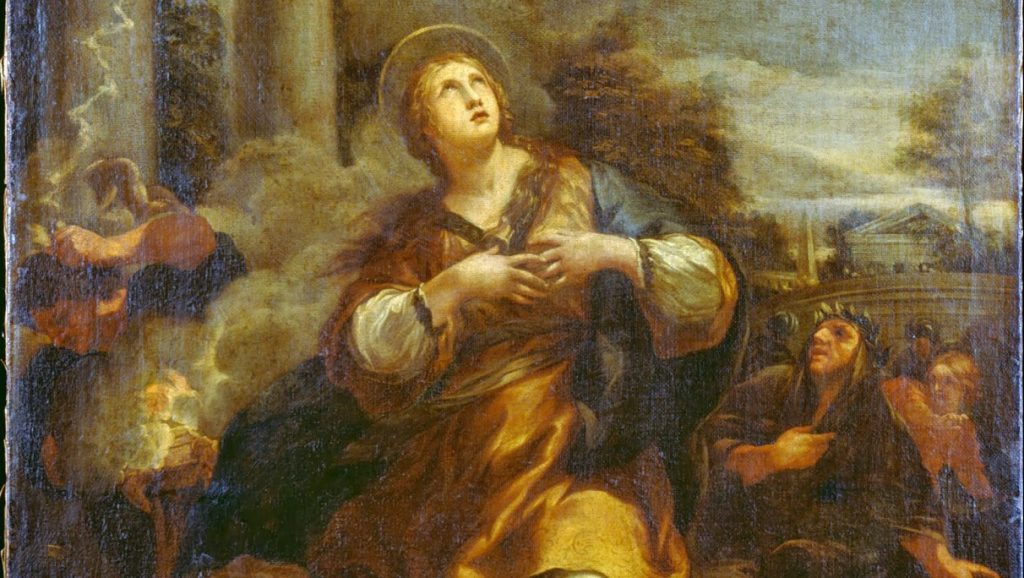St. Martina was born in Rome in the third century. Her parents died when she was very young, and left her a great deal of wealth, which she distributed to the needy. Martina vowed to live a chaste life, devoted to God, but the emperor Alexander ordered her to make sacrifices to the pagan gods.
When Martina refused, she was subjected to many kinds of torture. When the torture didn’t work, she was thrown to the beasts in the amphitheater to die, but God protected her. The emperor then ordered her to be thrown into a burning furnace, but again, she was covered with divine protection and left unharmed.
Some of her torturers were moved by these miracles, and embraced Martina’s faith. They were killed as martyrs. Angered, the judge ordered her beheaded, and she finally died a martyr for Christ.
A chapel was consecrated to Martina’s memory in Rome, and in the time of St. Gregory the Great, many went there to pray. In the year 1634, her relics were discovered in a vault under the ruins of the old church, and Pope Urban VIII built a new church in her honor.
St. Martina is ranked as one of Rome’s patrons.

